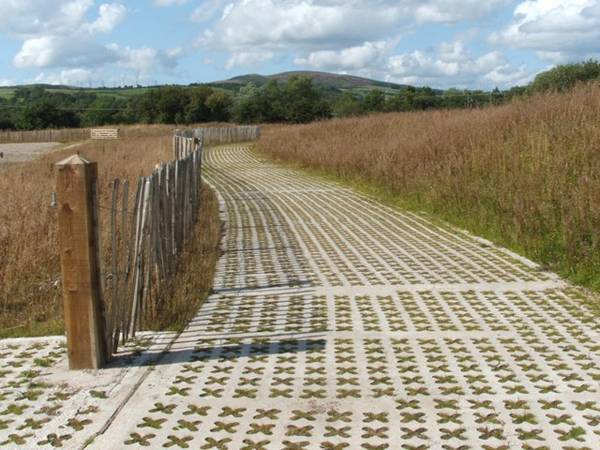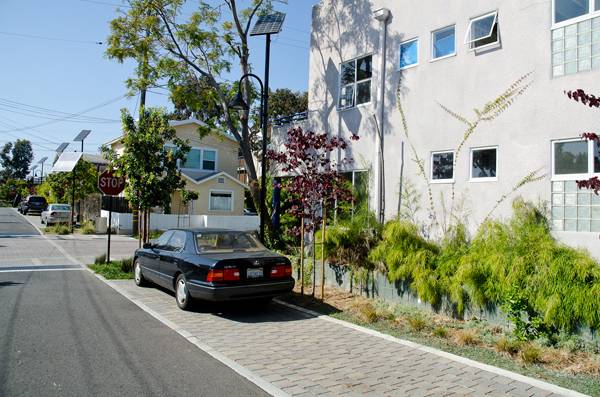A landscape architect’s dream come true – modern permeable surfaces – are finally here to stay. In recent years they have steadily become more and more popular. Concern for the environment, especially water resources, has massively contributed to their popularity and promotion. Different types of permeable surfaces have actually been known for generations. Turf, gravel, or simply soil are all allowing the water to penetrate through them into the underlying soil. However simple and cheap, those surfaces are not suitable for use on paths and roads with higher traffic volume due to their lack of durability. They are also not stable enough, making them harder to use, especially for people with special needs – the elderly, wheelchair users, parents with prams or simply women in high heels!
Choose the best for your needs! Modern permeable surfaces are overcoming all those problems; they are stable and durable, easy to walk and drive on. Nowadays we can choose from a whole range of products with different qualities and applications. Some of them are based on a grid system. Grass pavers and gravel pavers are numbered amongst them. They consist of a solid grid – concrete or plastic, with large pores filled with turf, a low growing herb or gravel. Water sinks through the pores into the stone-filled reservoir below and then into the native soil. That kind of surface is not particularly resilient and cannot be used in areas of heavy traffic. The idea behind the unit pavers is essentially a reversed grid system, where interlocking concrete paving blocks are separated by pores filled with a permeable material – sand or gravel. This surface is suitable for low-traffic roads, such as private car parks or driveways. Below: A detailed overview of Permeable Interlocking Concrete Pavements Permeable asphalt and permeable concrete are much tougher materials, which can be employed on heavy-traffic roads, including motorways. The asphalt consists of an open-graded coarse aggregate, bonded together by asphalt cement, with sufficient interconnected open spaces to make it highly permeable to water; the concrete is a mix of special Portland cement, open-graded coarse aggregate and water. The lack of fine material in both surfaces guarantees high permeability to water. Contemporary permeable surfaces are much more interesting. One of its types, the resin bound surfacing, is a mixture of resin binder and aggregate. The encapsulation of all the aggregate within the resin allows each particle to adhere to one another and to the base, leaving no lose gravel. The voids left within the surface layer are enough to ensure full permeability for water and air. Such surface is stable, strong and durable, suitable for both pedestrian and car traffic. It is also non toxic, has a neutral look and is available in a large variety of natural colours.
This walkway of permeable paving surrounds a new SUDS pond.
© Copyright Lairich Rig and licensed for reuse under this Creative Commons Licence.
- Such surfaces help to restrict the erosion by reducing the runoff volumes.
- They have been proven to be effective in removing pollutants from water.
- They allow for groundwater recharge and eliminate the heat pollution which affects the water gathering on traditional pavements.
- They also reduce the size of the Effective Impervious Area and the infrastructure footprint – they require a smaller on-site water storage area. They can be laid around the tree near the trunk without posing any danger to the plant.
Problems with Permeable Paving Like every technique, this one also has its dangers and limitations. First of all, permeable surfaces should not be used in areas of high pollution due to the danger of contaminating the groundwater. Such spots include for example industrial storages, fuelling stations and vehicle maintenance areas. Secondly, the application in very cold climates is a challenge – water freezing below the pavement might cause frost heave and destroy the surface. It is not surprising that the cost is one of the main issues. Below: A really nice run through of a permeable paving installation The modern permeable surfaces can be two to three times more expensive then the traditional paving. However, as the technique advances and becomes more popular, the prices should become lower and the products more available. It also must be remembered that they actually help to save money by reducing the amount of necessary stormwater storage in the area!
As our environmental consciousness grows and new techniques are being invented and implemented, the popularity of permeable surfaces is on the rise. Will it continue to grow? Will they prove to be a modern solution to water management problems? Is one of them going to become the asphalt of the 21st century? It is our decisions, as landscape architects, planners or investors, that will influence the future of permeable surfaces! Article written by Marta Ratajsczak Featured image: Permeable paver demonstration, source JJ Harrison CC BY-SA 3.0 Published in Blog










